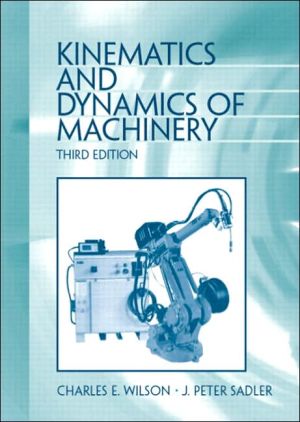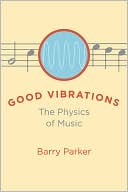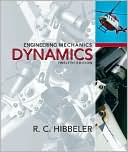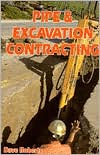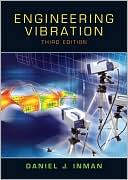Kinematics and Dynamics of Machinery
Kinematics and Dynamics of Machinery teaches readers how to analyze the motion of machines and mechanisms. Coverage of a broad range of machines and mechanisms with practical applications given top consideration. Mechanisms and Machines. Motion in Machinery. Velocity Analysis of Mechanisms. Acceleration Analysis of Mechanisms. Cams. Spur Gears. Helical, Worm, and Bevel Gears. Drive Trains. Static-Force Analysis. Dynamic-Force Analysis. Synthesis. Introduction to Robotic Manipulators.
Search in google:
Kinematics and Dynamics of Machinery teaches readers how to analyze the motion of machines and mechanisms. Coverage of a broad range of machines and mechanisms with practical applications given top consideration.Mechanisms and Machines. Motion in Machinery. Velocity Analysis of Mechanisms. Acceleration Analysis of Mechanisms. Cams. Spur Gears. Helical, Worm, and Bevel Gears. Drive Trains. Static-Force Analysis. Dynamic-Force Analysis. Synthesis. Introduction to Robotic Manipulators.
What Abilities Define an Engineer?\ Part of the answer is given by the program outcomes and assessment criteria of the Accreditation Board for Engineering and Technology'. Engineering programs must demonstrate that their graduates have specific abilities. These include:\ \ an ability to apply knowledge of mathematics, science, and engineering\ an ability to analyze and interpret data\ an ability to design a system, component, or process to meet desired needs\ an ability to identify, formulate, and solve engineering problems\ an ability to communicate effectively\ an ability to use techniques, skills, and modern engineering tools necessary for engineering practice.\ \ Goals of the Text\ A course in the kinematics and dynamics of machinery provides many opportunities to develop the abilities listed above. This text is designed to help foster development and application of those skills. One goal is to develop the ability of students to formulate and solve problems in the kinematics and dynamics of machinery. Engineering tools used to achieve this goal include motion simulation software and general-purpose mathematical software. These tools relieve the designer of repetitive tasks and provide a powerful means of communicating results through graphs and animation simulations. An equally important goal is the development of an understanding of the implications of computed results. That is, what do the results mean; how can we improve the design? Knowledge gained in previous courses is reinforced when applied to problems in the kinematics and dynamics of machinery. For example, matrix methods become meaningful when applied to equationsdescribing velocities and accelerations in a spatial linkage. The skills learned and sharpened in studying the kinematics and dynamics of machinery are carried forward, even to unrelated courses and to engineering practice. Scope\ The coverage of this text includes mechanisms and machines, basic concepts; motion in machinery; velocity and acceleration analysis of mechanisms; design and analysis of cams, gears, and drive trains; static and dynamic force analysis; synthesis; and an introduction to robotic manipulators. Practical applications are considered throughout the text. Example problems and homework problems involve engineering design and provide a basis for design courses to follow. Analytical and graphical vector methods are illustrated, as well as complex number methods.\ The text illustrates the use of motion simulation software, mathematics software, and user-written programs to solve problem and to present the results in plotted or tabulated form.\ There are also many problems that can be solved by "hand calculations," however, using only a scientific calculator and/or simple drafting tools. The latter group may be useful as short practice problems and examination problems when laptop computers are unavailable. What's New in the Third Edition?\ The text was updated throughout. A few of the changes and additions include:\ \ A list of "Concepts you will learn and apply . . . ." for each chapter.\ Chapter summaries\ Review and discussion items for each chapter\ Thorough revision of the material on cam design, including application of step and interval functions, and higher order polynomials for cam design.\ Practical design implications of results Gear train diagnostics based on noise and vibration frequencies\ Updates, example problems and homework using motion simulation software Updates example problems and homework problems using mathematics software throughout the text.\ Other updates for clarity and brevity\ Suggestions for "working smart," particularly with computers. Emphasis on computer-aided matrix solutions where appropriate\ Interpretation and assessment of results. Is it logical? Does it check? Let's compare results with another solution. What does it mean? What does the graph show?\ Practical design implications of results\ \ Course Development\ Professors who regularly teach the kinematics and dynamics of machinery will know what topics suit their students best. This note is for instructors who have not taught the course recently.\ Most of the topics in this text can be covered in a three-credit-hour course given to engineering students who have completed a course in the statics and dynamics of rigid bodies. But a single course designed around the entire book would be likely to have insufficient depth. Instructors may decide to cover the parts of the text that they deem essential, and then select additional topics and solution methods according to goals set for their students. For example, either analytical vector methods or complex number methods may be used as a basis for writing computer programs to solve planar linkages. However, if analysis of spatial linkages is to follow analysis of planar linkages, then vector methods might be used for both.\ For courses built around the use of motion simulation software and mathematics software, graphical methods are likely to be de-emphasized. For example, the velocity polygon might be used only to spot check a detailed analytical velocity analysis of a planar linkage. In a course concerning the kinematics and dynamics of machinery, uniformity of course content is not essential. Differences in emphasis and methods among university engineering departments may strengthen the "gene pool" of future engineers.\ We have attempted to provide sufficient rigor and advanced material to challenge the student and provide a basis for further study. Student creativity may be fostered by the demands of the task, particularly if a few homework problems are expanded into open-ended design-type projects. Additional projects requiring creativity may be suggested by articles in technical publications or by an instructor's current research and consulting. Disclaimer\ The kinematics and dynamics of machinery and the design of mechanisms involve modeling of physical systems. Relationships so developed have limits of applicability. The user of this text is urged to interpret the results of calculations, rather than simply obtain problem solutions. It is the reader's responsibility to assess formulas and methods to determine their applicability to a particular situation. Although the publisher, the reviewers, and the authors have made every effort to ensure accuracy, errors invariably creep in. Suggestions and corrections are most welcome.
1. Mechanisms and Machines: Basic Concepts. 2. Motion in Machinery. 3. Velocity Analysis of Planar and Spatial Mechanisms. 4. Acceleration Analysis of Planar and Spatial Mechanisms. 5. Design and Analysis of Cam and Follower Systems. 6. Spur Gears: Design and Analysis. 7. Helical, Worm, and Bevel Gears: Design and Analysis. 8. Drive Trains: Design and Analysis. 9. Static-Force Analysis.10. Dynamic-Force Analysis.11. Synthesis.12. Introduction to Robotic Manipulators.
